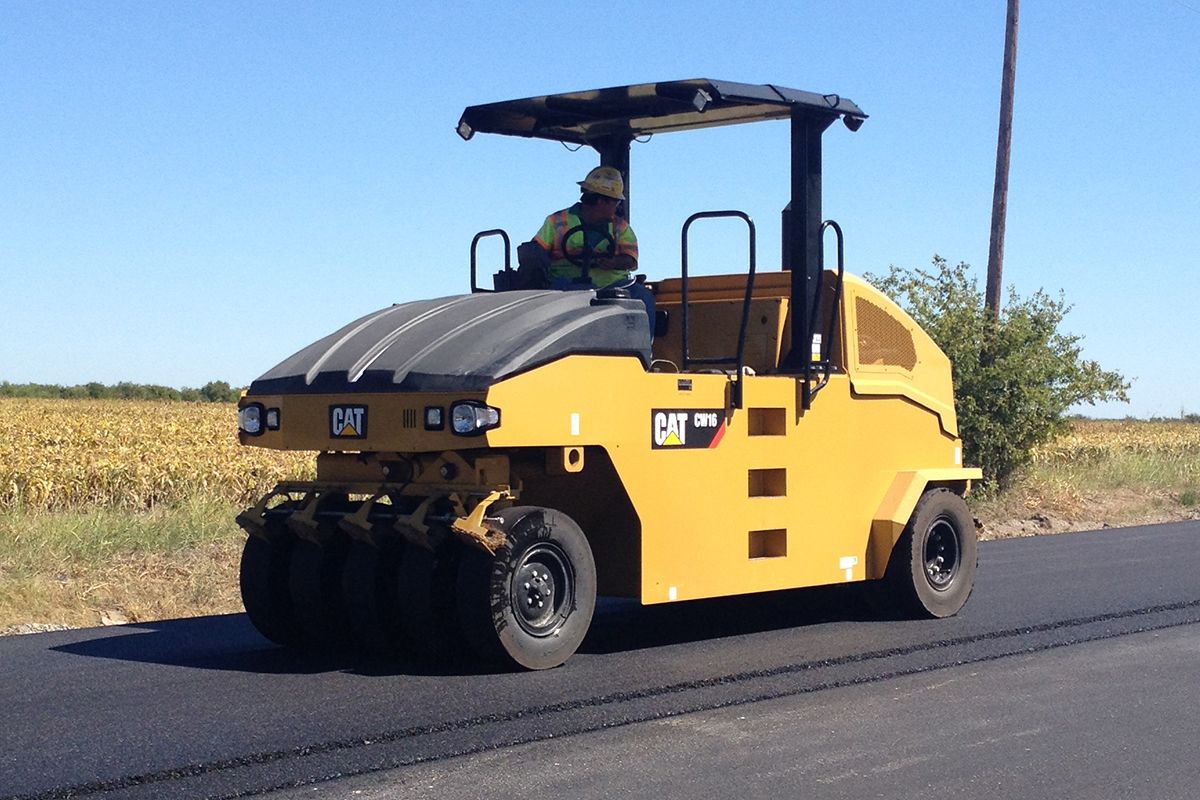Weights
| Operating Weight - 11 Wheel Base Machine | 11685 lb 5300 kg |
| Operating Weight - 11 Wheel with Maximum Ballast | 32849 lb 14900 kg |
| Load per Wheel - 11 Wheel Base Machine | 1058 lb 480 kg |
| Load per Wheel - 11 Wheel with Maximum Ballast | 2976 lb 1350 kg |

Key Specs
The Cat® CW16 with 11 wheels offers an operating weight range of 5300 kg to 14 900 kg (11,685 lb - 32,849 lb) for excellent versatility and performance. Equipped with an efficient Cat engine, this machine delivers smooth, reliable performance on grades and soft base materials.
| Operating Weight - 11 Wheel Base Machine | 11685 lb 5300 kg |
| Operating Weight - 11 Wheel with Maximum Ballast | 32849 lb 14900 kg |
| Load per Wheel - 11 Wheel Base Machine | 1058 lb 480 kg |
| Load per Wheel - 11 Wheel with Maximum Ballast | 2976 lb 1350 kg |
| 11 Wheel Compaction Width with Bias Tire | 84 in 2132 mm |
| Travel Speed - Maximum | 12 mile/h 19 km/h |
| Ground Clearance | 9.5 in 241 mm |
| Turning Radius - Outside | 255 in 6455 mm |
| 11 Wheel Compaction Width with Radial Tire | 83 in 2103 mm |
| Inside Turn Radius - 11 Wheel | 133 in 3378 mm |
| Gross Power | 100.5 hp 75 kW |
| Engine Model | C3.4B or C4.4 C3.4B or C4.4 |
| Height - ROPS | 9.8 ft 3000 mm |
| Overall Length | 14.1 ft 4290 mm |
| Height - Steering Wheel | 91 in 2320 mm |
| Water Spray Tank Capacity | 92 gal (US) 348 l |
| Fuel Tank Capacity | 38 gal (US) 146 l |
We’re committed to helping you achieve your environmental and business goals.
Learn MoreCaterpillar product brochures and other informational documents are available for your growing business.
Leverage Caterpillar connected data and security principles to improve efficiencies, increase productivity and make your business more profitable.
Cat® Compact with Temperature Indication for asphalt helps operators visualize coverage area while recording Pass-Count and Temperature data. The system utilizes infrared temperature sensors and GPS mapping to keep the operator informed of current mat temperatures, machine position, pass-count and pass coverage.
Cat® Compact with Temperature Indication for asphalt helps operators visualize coverage area while recording Pass-Count and Temperature data. The system utilizes infrared temperature sensors and GPS mapping to keep the operator informed of current mat temperatures, machine position, pass-count and pass coverage.
Cat® Inspect allows you to access your equipment data on your mobile device. This easy-to-use app lets you capture inspection data and integrates with your other Cat data systems, so you can keep a close eye on your fleet. More than one million inspections are completed each year, providing convenience and accountability to equipment owners.
VisionLink™ is a cloud-based software application that takes the guesswork out of fleet management with key insights to maximize performance - regardless of fleet size or equipment manufacturer. Receive equipment data seamlessly to your desktop or mobile device, all from a convenient centralized solution to make informed decisions at every turn.
Cat® Inspect allows you to access your equipment data on your mobile device. This easy-to-use app lets you capture inspection data and integrates with your other Cat data systems, so you can keep a close eye on your fleet. More than one million inspections are completed each year, providing convenience and accountability to equipment owners.
VisionLink™ is a cloud-based software application that takes the guesswork out of fleet management with key insights to maximize performance - regardless of fleet size or equipment manufacturer. Receive equipment data seamlessly to your desktop or mobile device, all from a convenient centralized solution to make informed decisions at every turn.
